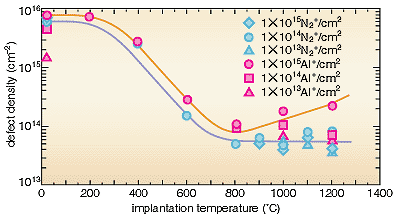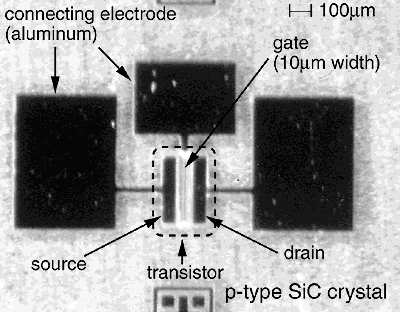For materials to be used as electronic devices in strong radiation
fields such as in spacecraft or in nuclear power plants, silicon
must be replaced by other suitable materials because it is easily
damaged by radiation. We have been studying silicon carbide (SiC)
as a promising material for high power, high temperature and radiation-resistant
devices.
To make SiC transistors, introduction of impurities into SiC crystals
as in ion implantation is required to get p-type and n-type conducting
layers. Conventional ion implantation does not produce electrically
activated impurities, however. We therefore focussed our attention
on hot implantation, and implanted nitrogen ions of donor into
a p-type SiC single crystal substrate heated to 1,000 degrees.
It turned out that this reduces implantation-induced defects significantly
(Fig. 4-5) and simultaneously converts n-type SiC into p-type
SiC after the electrical activation of the implanted nitrogen.
As for a MOS (metal/oxide/semiconductor) structure, we fabricated
a radiation-resistant MOS structure, two orders of magnitude stronger
than silicon, by oxidizing the surface of the SiC substrate at
1,100 degrees under a mixed gas atmosphere (H2O+O2) with H2O being produced by burning hydrogen. By using the hot-implantation
and the MOS fabrication techniques, we can obtain radiation-resistant
SiC MOS transistors (Fig. 4-6). |


